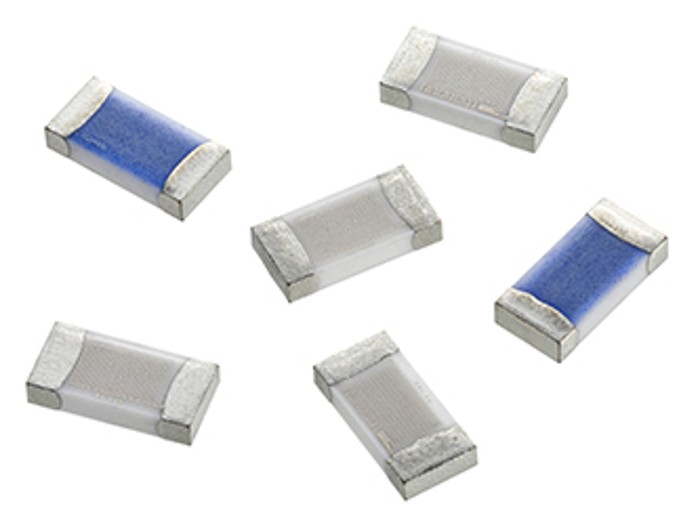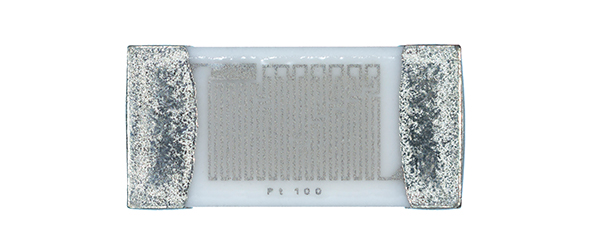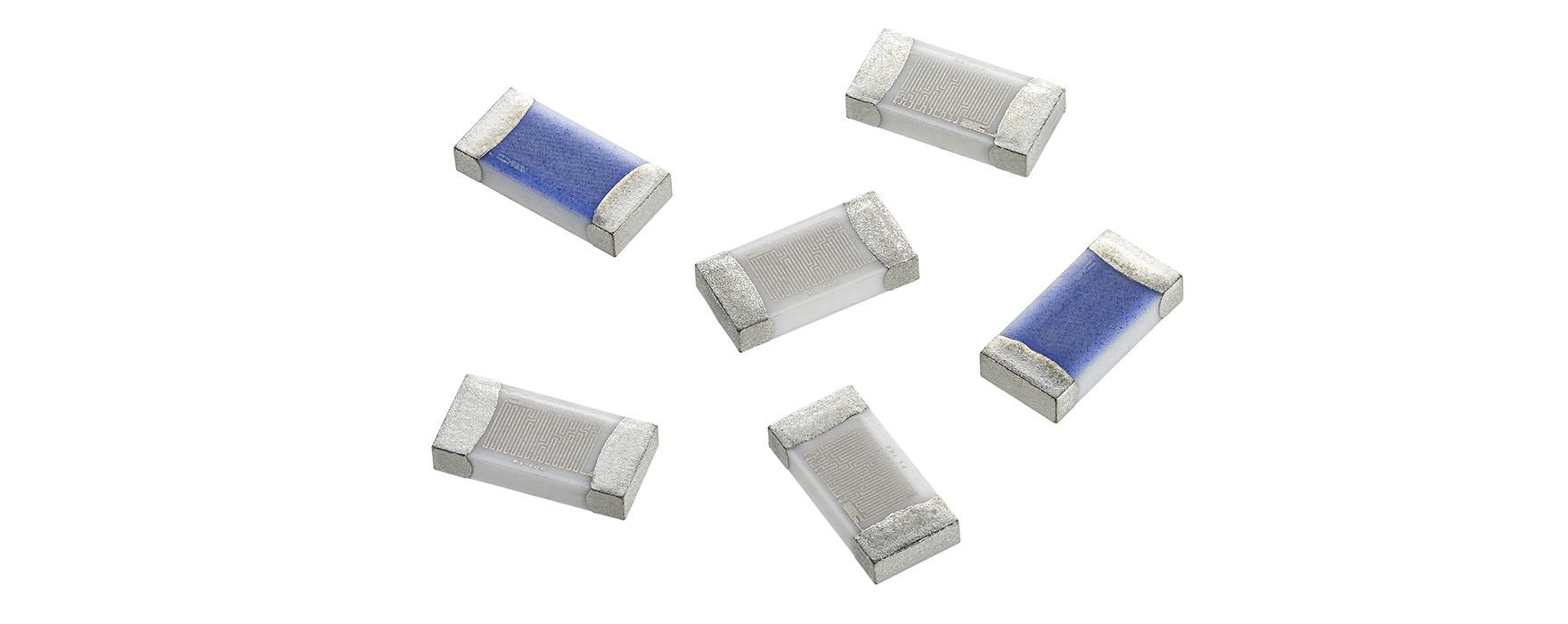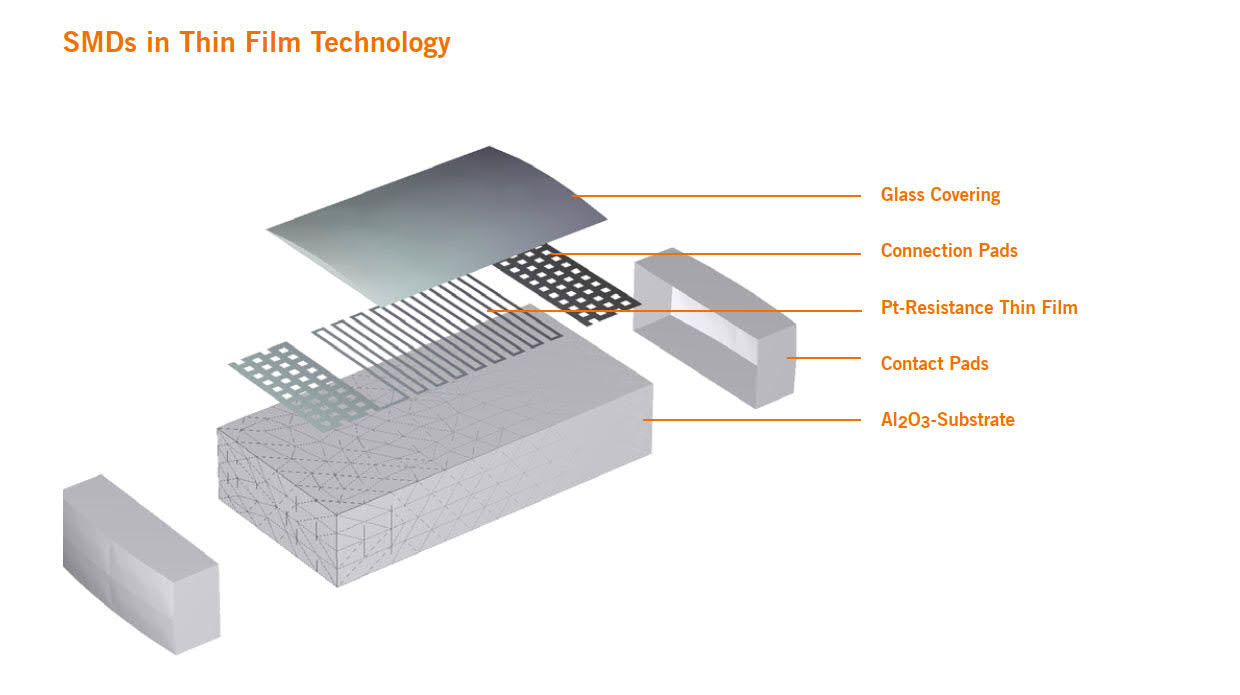What is a RTD in SMD packaging?
The SMD (surface mount device) is a standardized electronic package format that supports mounting of electronic components on printed circuit boards (PCBs).
Platinum-RTDs (Resistance Temperature Detector) in standard SMD packages combine the advantages of Pt-based RTDs, such as a linear, standardized signal characteristic according to DIN EN 60751, high accuracy, and long-term stability, with the standardized electronic SMD format for surface mounting. The sensor enables reliable and precise temperature measurements over a wide temperature range, with the additional benefits of competitive cost and automated mounting capability on printed circuit boards.

What allows SMD sensors to be easily installed on printed circuit boards?

The SMDs can be handled in automated production lines and in large volume via pick-and-place tools. These tools are typically used in electronic industries to remove the SMD component from the blister reel and to place it on the board. In a second step the component is soldered to the board.
Many HVAC applications are in the ambient to low temperature range. Devices using temperature sensors include thermometers, thermostats, smart valves, indoor controls and control units. Furthermore, there are many different equipment types, such as heating furnaces, heat pumps, chillers, cooling towers, air conditioner systems, etc. that are controlled and managed by temperature sensors.
What are typical applications examples of SMD sensors in HVAC and smart home controls?
SMD-RTDs are used as precise sensing elements in heat meter sensors. In this application, SMD sensors are typically mounted on a small PCB for enhanced thermal isolation and easy installation in a sensor housing tube.
Additionally, SMD-RTD sensors are utilized to regulate the temperature of thermoelectric devices used in precision air and liquid cooling applications.
SMD-RTDs can fulfill several purposes. In many applications SMD sensors provide overtemperature protection for circuit boards, especially in power electronics designs. The compact size of SMD temperature sensors encourages their use for drift compensation of temperature dependent sensors, e.g. gas sensors, flow sensors, or optical sensors.
In smart home controls such as indoor temperature controls, humidity sensors, air quality sensors temperature sensitive SMDs are integrated on a sensing board to monitor ambient temperature.
What are the advantages of Pt-SMDs?
The Pt-SMD has the advantage of a standardized, linear signal that supports high measurement accuracy and repeatability over the full measuring range of -50 °C to +170 °C. Platinum-RTDs exhibit very low signal drift and resistance to humidity, ensuring years of high-accuracy performance. Performance characteristics remain stable and constant when operated over the specified temperature range.

How is an SMD sensor constructed?
The Pt-RTD in SMD format is fabricated on our high-volume thin film production lines. A fine platinum structure is applied onto a ceramic substrate and trimmed to the nominal resistivity, e.g. 100 Ohm or 1000 Ohm for T = 0 °C. After singulation of the individual chips, the edges are metallized to support automated solder mounting.
By the way, the Pt-RTD structure does not limit the operating temperature window of SMD-Pt elements. The limiting factor is the soldering process and the stability of the solder connection used to attach the sensor to the circuit board.





